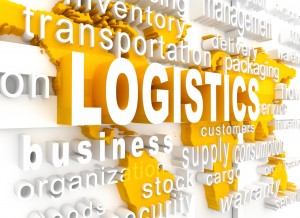Wasp Barcode Technologies: The Barcode Solution People
Manufacturers Want 3rd Party Logistics Partners, Not Suppliers
Like many service providers, 3
rd party logistics providers (3PLs) face massive changes if they want to compete in the global marketplace.
Manufacturers’ needs are changing as technologies, industries, and devices converge. Instead of fragmented services, supply chain companies require integrated solutions that support their business models.
This shift is gaining traction as 3PLs expand across geographic regions and target new verticals. Along the way, they are setting up one-stop-shops or providing end-to-end solutions that include consulting firms and technology companies such as
System ID.
And manufacturers and other industries are embracing this shift from solutions to services. In fact, experts agree that 3PLs who don’t join this movement will severely limit their growth potential and possibly go out of business as the expectations of manufacturers and distributors continue to climb.
Change fueled by innovative use of technology
Interestingly, the mission of current third-party logistics providers is closer than ever to the Council of Supply Chain Management Professionals’ original definition.
[caption id="attachment_6165" align="alignright" width="300"]

To remain competitive, 3rd party logistics providers must deliver solutions, not services. Manufacturers' needs are changing; so must 3PLs.[/caption]
A firm that provides multiple logistics services for use by customers. Preferably, these services are integrated, or “bundled” together by the provider. These firms facilitate the movement of parts and materials from suppliers to manufacturers, and finished products from manufacturers to distributors and retailers. Among the services they provide are transportation, warehousing, cross-docking, inventory management, packaging, and freight forwarding.
While the definition of 3PLs isn’t changing, their innovative uses of converging technologies are. In a December 2014
DC Velocity article that was initially published in a special edition of
CSCMP’s Supply Chain Quarterly, author Adrian Gonzalez gives examples supporting this trend. They include:
- Amazon’s move inside Procter & Gamble warehouses to fulfill online orders
- C.H. Robinson and Transplace’s development of software-as-a-service (SaaS) applications
- Google’s investment in a fleet of vehicles for consumer deliveries
- Uber’s local delivery service that lets consumers use a mobile app to arrange for foot or bicycle messengers to pick up and deliver items weighing no more than 30 pounds
- Transportation Insight, enVista, and LeanLogistics’ offerings of managed services
Behind these trends are hardware and software technologies that accelerate productivity and profitability. Industry leaders such as
Zebra and
Motorola Solutions have fine-tuned their offerings to support widespread mobility, instant access to information, and always-on communications, which are critical components for effective 3PL partners. Advancements include:
- Enterprise mobile computers with powerful processors, increased memory, lightning-fast Wi-Fi, integrated cellular services, and compatibility with Android, iOS, and Windows platforms and applications—all of which enable instant access to actionable intelligence for optimal productivity from any location
- Asset tracking software that monitors assets’ locations and statuses to avoid unnecessary, costly replacements
- Tighter security in buildings, workspaces, and events using customizable ID cards with improved safety features
- Inventory management systems that ensure proper inventory levels and compliance with regulations by accurately tracking constantly moving products, enabling easy data sharing, and delivering real-time visibility across the entire supply chain
- Mobile device management solutions (MDM) that remotely monitor performance and proactively prevent downtime, whether on the road or in the warehouse
What does your future look like?
In a recent
Harvard Business Review article, Anthony J. Tjan, chief executive officer and founder of the venture capital firm Cue Ball, challenged 3PL executives to reexamine what business they are in.
“It seems like a straightforward question and one that should take no time to answer,” Tjan said. “But the truth is that most company leaders are too narrow in defining their competitive landscape or market space. They fail to see the potential for ‘non-traditional’ competitors, and therefore often misperceive their basic business definition and future market space.”
Logistics leaders are heeding Tjan’s advice. According to Gonzalez, some 3PLs now provide software applications, trading partner connectivity, and data-quality management services that deliver timely, accurate, and total visibility to supply chain events. Others offer thought leadership advice in the forms of strategies and practices designed to facilitate faster, smarter decisions, while a few focus on risk management solutions that help companies quickly recover from supply chain interruptions.
A growing number of 3PLs are following the convergence trail and providing all of these integrated business management solutions. As more end-to-end logistics solutions providers emerge, it will be critical for 3PLs to know their strengths so they can stand out from the competition.
Customers want partners, not suppliers
Manufacturers and other verticals know their desired outcomes. Finding a partner to help them achieve these goals may not be as simple. The days of traditional 3PL suppliers, vendors, and consultants are gone, replaced by outsourcing partners that provide the right mix of technology, services, and advice.
| [su_divider top="no" size="2"]
[su_divider top="no" size="2"] |
Also fading from the limelight are short-term agreements focused on low-cost services. To reach higher levels of performance and benefits, Gonzalez says that “manufacturers and retailers need to start engaging in true collaboration and exploring vested relationships with their partners,” adding that, “3PLs and customers can develop a joint business plan and shared vision statement that align with the objectives and desired outcomes of the end customers, which in many cases are consumers like you and me.”
Want to learn more? Contact
System ID at 888.648.4452, subscribe to our blog, or follow us on
LinkedIn,
Twitter, and
Google+.



